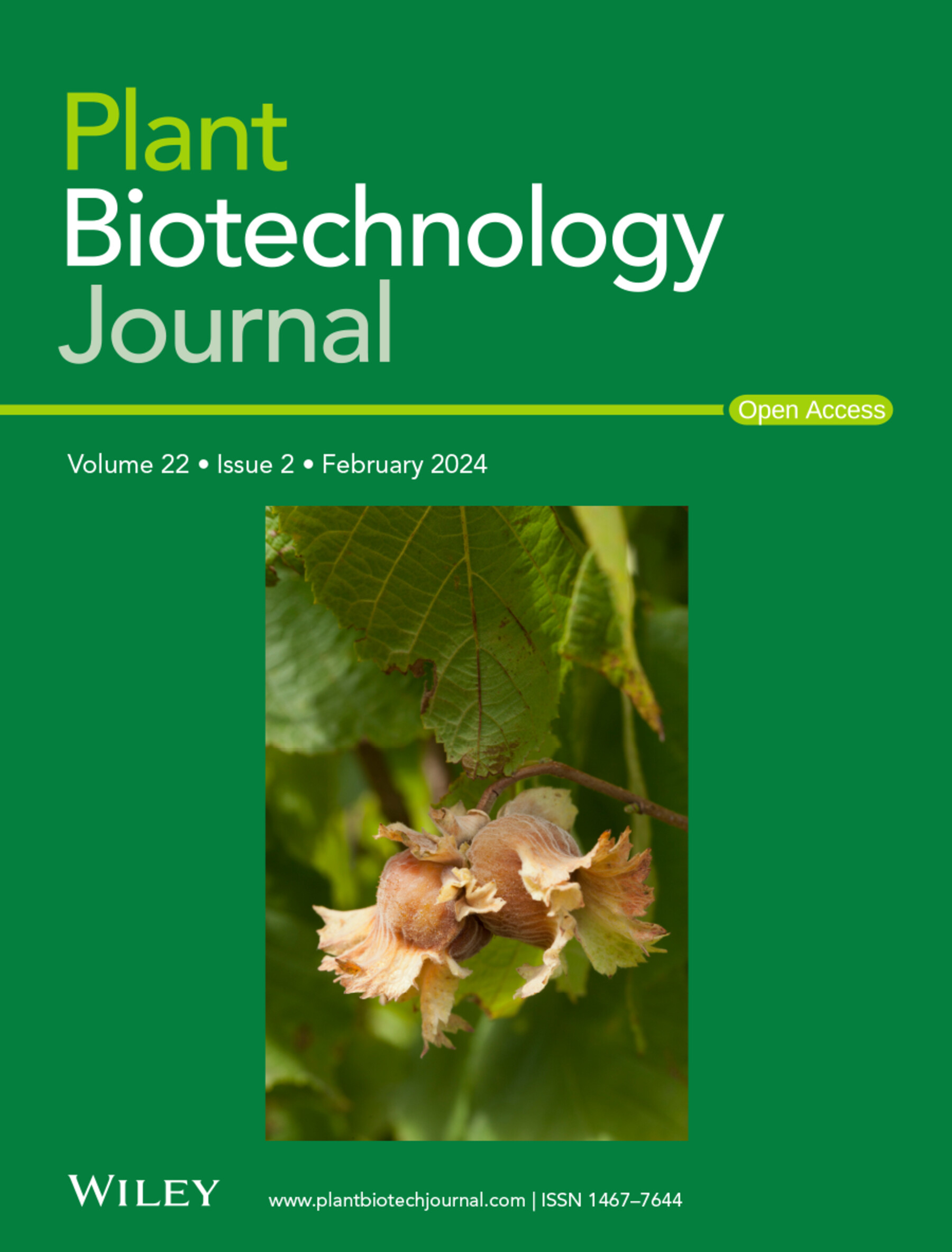BR signalling haplotypes contribute to indica–japonica differentiation for grain yield and quality in rice
IF 10.1
1区 生物学
Q1 BIOTECHNOLOGY & APPLIED MICROBIOLOGY
引用次数: 0
Abstract
The functional difference of natural variations in conserved BR signalling genes and the genetic basis of rice indica–japonica differentiation are important yet unknown. Here, we discovered natural variations of the four key components (OsBRI1, OsBAK1, OsGSK3 and OsBZR1) in BR signalling pathway by GWAS using an indicator of indica–japonica differentiation in rice. Two major BR signalling haplotypes (BSHs), caused by co-selected variations of the four genetically unlinked genes, were identified to be highly differentiated between rice subspecies. The genetic contributions of BSHs to grain yield and quality were much higher than that of each component. Introducing alleles of japonica into indica employing substitution lines of OsBAK1, complementation lines of OsGSK3 and genetic populations of OsBRI1/OsBAK1/OsGSK3 confirmed their functional differences between two subspecies. The BSH differentiation led to weaker interaction between OsBRI1 and OsBAK1, stronger autophosphorylation and kinase activity of OsGSK3, less RNA/proteins and stronger phosphorylation of OsBZR1, and weaker BR sensitivity in indica than japonica rice, and regular expression trends of BR-response genes between subspecies, and then synergistically enhanced yield and superior quality of indica. Our results demonstrate that BSHs contribute to rice inter-subspecies diversity, and will provide proof-of-concept breeding strategy and useful targets in crops.求助全文
约1分钟内获得全文
求助全文
来源期刊

Plant Biotechnology Journal
生物-生物工程与应用微生物
CiteScore
20.50
自引率
2.90%
发文量
201
审稿时长
1 months
期刊介绍:
Plant Biotechnology Journal aspires to publish original research and insightful reviews of high impact, authored by prominent researchers in applied plant science. The journal places a special emphasis on molecular plant sciences and their practical applications through plant biotechnology. Our goal is to establish a platform for showcasing significant advances in the field, encompassing curiosity-driven studies with potential applications, strategic research in plant biotechnology, scientific analysis of crucial issues for the beneficial utilization of plant sciences, and assessments of the performance of plant biotechnology products in practical applications.
 求助内容:
求助内容: 应助结果提醒方式:
应助结果提醒方式:


